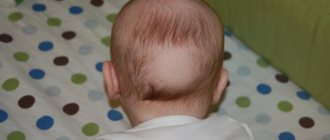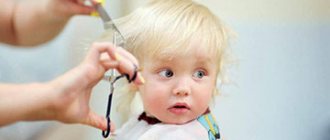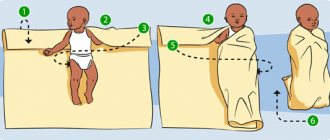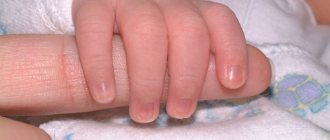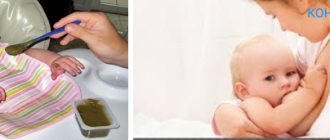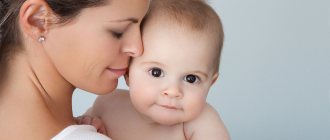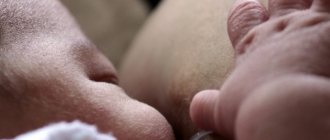It is traditionally believed that when a child reaches the age of one year, he should have his hair cut bald. The origins of this belief go back centuries. At least, this is what representatives of the older generation insist on. Let's figure out whether it is necessary to cut a child's hair every year.
In Islam, this tradition states that the first haircut should be timed to coincide with the age of forty days. For Christians, this is done at one year old. It is believed that the baby's hair is a connecting thread between the inner world of the child and the mother. And this, supposedly, is the main reason why you cannot cut your hair before this age, so as not to interrupt such unity.
The tradition of cutting hair for one-year-old children
In pagan times, hair had a sacred meaning. Many signs and superstitions were associated with them. This is typical not only for Slavic peoples. Until now, special importance is attached to children's haircuts in India, Mongolia, Israel and other countries.
For the Slavs, the first year of life was a special date. This may be due to the high infant mortality rate. A child who has reached the age of one year could already be adopted into the family.
There are other points of view - for example, at the age of one year boys were handed over from their mother to male relatives to be raised, and their hair was cut as a sign of obedience to their father.
A haircut was considered an opportunity to ward off evil spirits, erase the memory of childbirth, cut the umbilical cord to the ground for the first steps - there are many versions.
By the way, according to surviving sources, only a few locks of hair were cut for the ritual, and why children are cut bald now remains a mystery.
The tradition of a total “bald” haircut is most likely explained by much more prosaic reasons.
In earlier times, lice were not uncommon, nor were the diseases they carried. For a small child, infection with parasites is much more dangerous and uncomfortable than for an adult. And from this point of view, the haircut is more than justified.
As a conclusion
If the baby is categorically against a haircut, there is no need to insist. A similar procedure can always be carried out after a couple of months. A child's haircut must be postponed if he has recently been ill or has undergone any medical manipulation of the head.
Is it necessary to cut a child's hair every year? This is not at all necessary. But if for some reason you decide to resort to hairdressing manipulations, you need to firmly know how to cut a baby’s hair, with what tools, in what environment. This will help avoid possible negative consequences.
Tradition and modernity
It is unlikely that now there will be people who seriously believe in dispersing evil spirits with the help of a haircut. And lice are no longer an imminent danger. But for some reason, even today many of the older generation insist on observing tradition.
Here's how they argue why you should cut your child's hair every year:
- “We’ve always done it this way!” The argument, of course, is deadly, how could we live without it...
- Grandmothers often claim that after such a haircut, the hair begins to grow faster and becomes thicker - “the fluff does not allow real hair to grow!”
It has long been scientifically proven that this is not so. Parameters such as color, thickness, and hair type are determined genetically.
Whether you cut your child's hair or not, it will not affect heredity.
Pros and cons of cutting children's hair early
In Soviet times, one-year-old children were usually cut bald, without thinking about why such a procedure was necessary. And if the child was wearing a pantsuit, then it was almost impossible to understand who was in front of you - a boy or a girl.
Arguments against"
Modern experts are convinced that cutting a child’s hair at one year old is not only not beneficial, but can even cause significant harm to the child’s health.
Hair, as noted earlier, is formed in babies while still in the mother’s womb, which is why children are born with fluff on the head and even all over the body.
After some time, the newborn hair begins to fall out, and more mature hairs appear in its place. By the way, they often have a completely different color. It is also normal that new hair is delayed.
Trichologists give several arguments refuting the importance of cutting a child’s hair every year:
- The basis of the hairs are bulbs, which are located inside the skin. Therefore, everything that happens outside to the hair can in no way affect its formation in the inner layers.
- Some mothers and fathers are convinced that after cutting their hair becomes thicker. However, this impression is deceptive, since the density is created due to the equal length of all children's hairs.
- Hair follicles at 1 year of age are excessively weak and susceptible to damage. That's why even the most careful parents can accidentally pull the scissors and injure the hair follicles. This, on the contrary, will harm hair growth.
- One-year-old babies have very delicate skin, including on their heads. Often a child feels severe discomfort as a result of irritated skin, especially since prickly stubble begins to grow on the head.
- Using a shaving machine results in small scratches. These microscopic lesions become a “gateway” for pathogens. And this is already fraught with infection and inflammation.
There are no scientific studies that would confirm that after a haircut at the age of one, children’s hair grows faster, looks healthier and thicker. The appearance of hair depends on good nutrition, rich in vitamins, genes and proper hygiene.
Arguments for"
Despite the fact that cutting a child's hair at 12 months will not have a positive effect on the hair structure, in some situations a haircut may still be necessary.
When is getting rid of excess hair on the head justified:
- Because of his long hair, the boy is often mistaken for a baby. In this case, mothers, tired of explaining that there is not a “beautiful girl” in the stroller, but a future man, decide to use scissors (it’s still not worth shaving the child).
- Hot summer is another reason to get rid of excessive vegetation. Usually children whose first anniversary falls in the summer months get their hair cut. With a short hairstyle, it will be easier for an active baby to survive hot weather.
- A haircut is also acceptable if the long bangs cover the eyes. Firstly, hair constantly gets into the child’s mouth while eating, and secondly, overgrown curls can reduce the child’s visual acuity.
- Head injuries are an important reason to cut your hair. Many children are curious and constantly explore the world around them. Unfortunately, the process of learning is often accompanied by scratches. To treat the head, you will have to cut your hair.
- Many children have infantile scabs on their heads, which are extremely difficult to remove. It is not recommended to comb them, but for better treatment, you can cut the hairs short. Of course, in this case you cannot shave your head.
The desire of parents to see their child neatly cut hair is understandable. However, for this it is absolutely not necessary to cut it bald; it is enough to simply cut off the bangs that cover the eyes, or trim the strands that get into the mouth.
Why do they believe in the beneficial effects of haircuts?
Where does such confidence come from that your hair will become thicker and stronger?
It turns out that it has a basis, but it has nothing to do with the haircut:
- Firstly, thinning ends give fluffiness and softness to the first hairs. If you cut them, the growing hairs will appear coarser and thicker. But this is only an illusory deception.
- Secondly, it is at the age of one that natural hair change is observed. Intermediate hair gradually grows to replace the infant vellus, which is naturally thicker and stronger than vellus hair.
Therefore, after a haircut a year, the hair will really be stronger, but the reason is not at all due to hairdressing services.
Why do children get their hair cut every year?
Today, many parents implement rituals and ceremonies associated with a small child, without thinking about their meaning and purpose. And almost no one thinks about whether this or that procedure is necessary or whether it is just another superstition.
Traditions of other peoples
Most ancient peoples have traditions that require children to have their hair cut at a strictly defined age.
These rituals are associated with religious or mystical beliefs:
- for example, Indian parents even today cut the hair of one-year-old babies, as if saying goodbye to their past life and “programming” them for a more successful entry into the future;
- Mongolian parents invite all relatives to their child’s first haircut. The celebration consists of all guests cutting a lock of hair, giving some gift to the baby and saying wishes;
- In Israel , little boys raised in religious families wear sidelocks until they are three years old. However, ordinary parents also adhere to this rule. At the age of 3, the most respected relative cuts the hair first, then other guests join the ritual.
The ancient Slavs also had a ritual based on folk beliefs. Thus, parents were warned against cutting their children’s hair, because people believed that early haircut (before 12 months of age) would lead to weakness, pain, unluckiness, and poverty of the child.
Slavic rituals
In Ancient Rus', cutting the hair of a one-year-old baby was intended to symbolize the transition to a completely different life and protect the child from the evil eye, damage and the pranks of small demons.
The haircut of a one-year-old child was carried out according to strict rules and a specific algorithm:
- They started picking up scissors at 12 months. If you are late or hurry with a haircut, then it will lose its sacred meaning. That is, the ritual will become a regular hygienic procedure.
- In order for children's hair to grow back faster, a haircut per year had to be done on the growing moon. This rule was especially true for female babies.
- Usually the godparents performed the ritual, since they could not trust such a thing to a stranger. A sheep skin was spread in the middle of the nursery and the baby was placed on it. The intended parents cut off the baby's locks in four places, like a cross.
- Afterwards, the hair was hidden behind the icon and was considered a kind of amulet that protected against diseases and damage. There is also information that the strands were buried in an anthill (for wealth) or placed under the ceiling.
And today, parents continue to believe that the strands cut off at 12 months should be kept at home. They take it out and put it under the pillow if the baby has nightmares. Another use case is to demonstrate a curl to a first grader for better learning.
Misconceptions and Myths
Grooming one-year-old children is still a popular procedure, because many parents are confident in the usefulness of such actions. Moms and dads once heard from grandmothers that children's hair would become thicker, fuller and healthier.
It is necessary to understand whether parents’ opinions about the benefits of an “anniversary” hairstyle have any basis or are just common misconceptions:
- “If you don’t cut your child’s hair when he’s one year old, then in the future his hair will be thin and his hair will be thin.” In fact, the formation of hair structure and follicles occurs at the moment of conception. That is, if parents or grandparents do not have thick hair, then no ritual actions will help the child become the owner of a gorgeous mane;
- “If you shave a child at one year old, the hair will then be thick and shiny again.” Shaving is a fairly radical technique that can cause too much damage to children's hair follicles. Experts oppose such controversial parenting decisions;
- “The baby fuzz needs to be trimmed to make way for real hair.” A child under one year old has so-called vellus fine hair, which was formed in the mother’s womb. The hair will “mature” closer to the age of three, so there are simply no objective reasons for parents to panic.
Read below for a more detailed debunking of popular myths about children's hair. However, it is safe to say that such superstitions are quite tenacious and have been passed on from generation to generation for several centuries.
So is it necessary to cut your hair?
Pediatricians, when asked whether it is necessary to cut a child’s hair every year, answer in the negative. By 2-3 years, baby hairs will be completely replaced by intermedial hairs, and the baby’s hair will become fuller and stronger.
Therefore, parents have no reason to worry that by refusing to shave they have doomed their child to have thin hair.
The opinion of pediatrician Komarovsky
Should I cut my child's hair a year? Komarovsky E.O., a popular pediatrician, often hears this question at meetings with young parents. It turns out that solving this important problem can provoke a serious family conflict involving all close relatives.
No less controversial is the solution to another “major problem” - what to do with cropped hair.
Evgeniy Olegovich is absolutely sure that the quality of hair is determined by heredity. Parents have the right to decide for themselves whether to cut their baby’s hair or not; this will not affect the condition of the child’s hair.
The doctor also does not agree with the recommendations to comb the child frequently, wash his hair daily with baby soap and rinse his hair with a decoction of medicinal herbs.
Frequent combing, as well as frequent washing, can injure the scalp and worsen the condition of the hair. It is enough to wash your baby's head once a week.
The famous pediatrician is very skeptical about rinsing with herbal decoctions, considering advertising of such procedures a commercial ploy.
As for the safety of cut hair, the pediatrician advises not to limit yourself. Either in the river, or in the fire, or even bury it under an apple tree in the garden strictly on the eastern side at midnight.
It is better to ask questions about the connection between vital energy and cut strands to shamans, magicians and other voodoo, and not to pediatricians.
A little history
In the old days, it was not allowed to cut the hair of a baby under one year old. It was believed that such a procedure would interfere with his further development and harm his health. The first locks of hair were treated as a talisman; they were kept for a long time and sewn into the clothes of their sons before joining the army. It was believed that this helped to avoid dangers and protected from injury or injury.
A one-year-old child was shaved bald, believing that after this the hair would grow better. Many parents did this a few decades ago. From the characteristic “hairstyle” it was easy to guess the age of the baby. However, why shaving should change the structure of the hair was not explained or the answer was vague: the first fuzz must be shaved off to allow real hair to grow.
In fact, this procedure was a simple prevention of lice, infections and skin diseases. Therefore, if there are no medical indications, then there is no special need for shaving your hair.
Possible harm from shaving
Parents who decide to follow traditions should take into account the possible harm from hairdressing procedures and try to minimize it.
The scalp of a one-year-old child is very delicate and can be easily injured, which is dangerous due to the possibility of infection even with small scratches.
The baby's hair follicles are also vulnerable, which can be damaged by a shaving machine. Besides, you can’t persuade a small child to sit quietly. Therefore, it should be cut with extreme caution.
For a child, an unusual procedure can become stressful. Pain and unusual discomfort for the shaved head are possible.
In addition, the child is already accustomed to looking at himself in the mirror, and he may not like changes in his own appearance.
Why you shouldn't shave your baby's head a year
Shaving will not make your hair thicker
The thickness of the hair is determined genetically. The hair structure is formed in utero, so shaving will not affect the thickness of the hair.
Hair is renewed naturally
The fluff on a newborn's head is replaced by real hair gradually and without external intervention. The claim that it prevents hair growth is baseless.
Risk of cuts
There is a high probability of damaging the fragile scalp. Painful sensations can lead to physical and psychological discomfort. Subsequently, even an older child will find it difficult to tolerate hair cutting.
Risk of damage to hair follicles
Shaving can injure hair follicles; they take a long time to recover. In this case, instead of the thick hair inherent in nature, thin hair will grow.
Psychological trauma
Many parents have noticed that children react painfully to hair cutting - they cry or even scream and break out. This is not a simple whim. Psychologists say that kids perceive themselves as a whole; they consider hair an important part of themselves, like arms or legs.
INTERESTING! Umbilical remnant and treatment of the umbilical wound in a newborn
Children are even less willing to allow themselves to be cut at a hairdresser, because it is done by a stranger in an unfamiliar environment. A noisy shaving machine can frighten your baby even more.
Reasons for getting a haircut
Sometimes regrown hair can bother the baby. For example, bangs falling into the eyes will irritate the baby and negatively affect vision.
Long hair on the back of the head is very uncomfortable during the heat of summer. Because of them, the back of the head and neck sweat, discomfort interferes with sleep, and irritation occurs due to overheating.
Sometimes the hair needs to be cut to make it easier to treat baby crusts (gneiss) on the scalp. Although the hairs at this age are thin, they nevertheless prevent the mother from lubricating the crusts with oil and removing them. The crusts themselves do not interfere with hair growth and gradually disappear as fat metabolism normalizes, by about two years.
In these situations, it is really better to remove the hair. But why shave your child when you can just trim the hair neatly. Mom can trim bangs and hair on the sides and back of her head herself, subject to patience and extreme caution.
How to organize your first haircut
For the first time, you need to cut your baby's hair at home. For this purpose, far-sighted parents buy a special children's hair clipper. It works much quieter than the “adult” one and is designed specifically for children’s thin hairs. Such a device will gently trim the baby's head without causing him any trouble. In addition, it is necessary to create a special environment for this:
- During the haircut process, it is better to hold the child in the arms of the person he trusts most. Most often this is the mother.
- A haircut should be accompanied by a game that can distract the child from what is happening. You can amuse your child with a new toy or turn on his favorite cartoons.
- If scissors are used, they should have rounded ends so as not to injure the skin.
- To facilitate the process, it is better to moisten the hairs with water.
- You need to cut your curls very carefully, but quickly, taking advantage of a favorable environment.
- It is better to start cutting with difficult areas on the head, so that you have time to even them out before the baby is still tired of the procedure.
- The parents themselves need to show restraint and calm, since restless behavior or reaction to something is immediately transmitted to the child.
- Boys can more easily tolerate a haircut with a trimmer.
- The procedure cannot be carried out with an unhealthy child, or when he is not in the best mood.
- After the haircut is finished, you must show your baby in the mirror how beautiful he has become and praise him for his courageous behavior during the procedure.
Deciding whether to cut a child's hair at the age of one year rests solely with his parents. If the baby grows beautiful, even hair, then there is no need for such a procedure. If the strands grow unevenly, it is, of course, better to cut them.
Superstitions and myths about baby haircuts
The memory of ancestors is very tenacious, and sometimes manifests itself unexpectedly. We still tend to attach sacred meaning to hair, sometimes unconsciously.
It’s funny how many signs and superstitions, often contradictory to each other, have survived to this day:
- You cannot cut a child's hair before he is one year old, otherwise he will get sick (options: he will speak late, his connection with his mother will be disrupted, he will lose luck, he will lose his connection with the cosmos, etc.).
- You can cut your hair for the first time only on a cloudless afternoon (optionally on a full moon).
- The cut strands need to be burned (options are to throw them into a river or stream, bury them. Ancestors buried them in an anthill for future wealth).
- The first strand must be stored. If you put it under the pillow, it will protect your baby from nightmares (optionally, it will help a first-grader study better).
What to do with your hair?
The question of where to put your hair after the first haircut also raises a lot of controversy. What our grandparents did with them. To keep the hair beautiful and thick, the first hair cut was buried in an anthill. There were also several other options: drown it in water or hide it behind a beam on the ceiling.
Nowadays, the option of drowning hair in water (flushing it down the toilet) is very popular. It is believed that if you throw hair in the trash, the birds will build nests from it and the wind will not carry it through the streets, and the child will have a headache. Some parents prefer to burn the hair altogether, while others prefer to keep it in an envelope as a souvenir.
There are a lot of different superstitions floating around around your baby’s first haircut; whether you believe in them or not is your own business; the main thing is that what you choose matches your beliefs.
Features of children's hair growth
A baby's hair begins to form while he is in the womb. And no one can know in advance what degree of density and straightness, as well as color, they will have. In some babies they are thick, while in others they are almost non-existent. Weak (thin and soft) hair is because the hair follicles have not yet become stronger. Therefore, it is not recommended to cut children under one year of age.
It is important to know!
Another common situation is when the back of the head goes bald. Parents, seeing this phenomenon, begin to get seriously scared. In this regard, wanting to ensure uniform growth in the future, they want to cut off all the remaining hair.
In fact, this process is observed for the reason that the baby sleeps on its back and constantly turns its head. So the hairs, which have not yet become stronger, gradually roll off and are wiped off. As a rule, after some time, stronger hairs appear in their place.
Old Slavic belief
Where did the grandmothers get this information from? The thing is that this knowledge is the legend of centuries. Everything is very simply explained. Previously, the word “hair” did not exist, and what grows on a person’s head was called “hair” (only in the modern world this word has become a little abusive, as unkempt hair is called). Here you can even independently trace the connection between space and space. The thing is that people have always believed that the child is very strongly connected with various forces, which were called differently, including space. And all positive information from above comes to the baby (as well as to any adult) through the hair. By cutting them, you can deprive the child of a lot. That is why in our legends and traditions there are so many different aspects related to hair, which give a person not only beauty, but also strength and intelligence.
